With its first cultivation dating back to the ancient times, the rose is considered a timeless plant. Popularized because of the flowers, its beauty is surpassing, attractive to the old and the young.
The sight of the rose flower evokes warmth and intimacy, promoting a healthy well-being that the plant has become a staple, not just as a cut flower but in many gardens too.
Growing roses can be challenging but many still exert time and effort because the resulting blooms are worthwhile.
In this guide, we will discuss effective techniques to properly grow roses and answer what this plant really wants to thrive and produce our favorite flower.
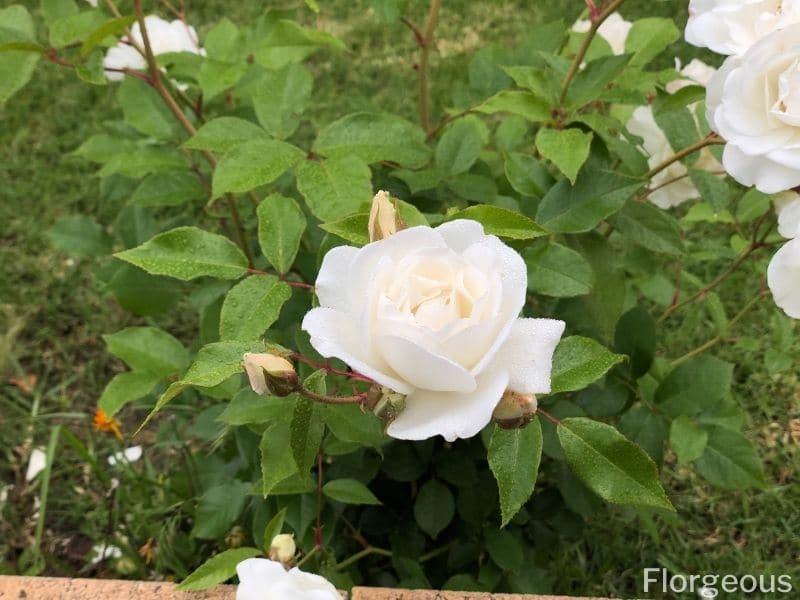
What Are Roses?
Roses are woody perennial flowering plants prized for their sensual blossoms which are commonly used in floristry, apothecary, and perfumery among others. Under the genus Rosa, there are over 200 species and thousands and counting of varieties and hybrids of roses.
They come in different sizes and flower formation, all of which are classified as species, heirloom or modern roses. The flowers also come in different shades of color such as white, yellow, orange, red, and purple and even the unusual green, blue, and black which are not just the result of natural growth but of painstaking breeding by professional growers (1).
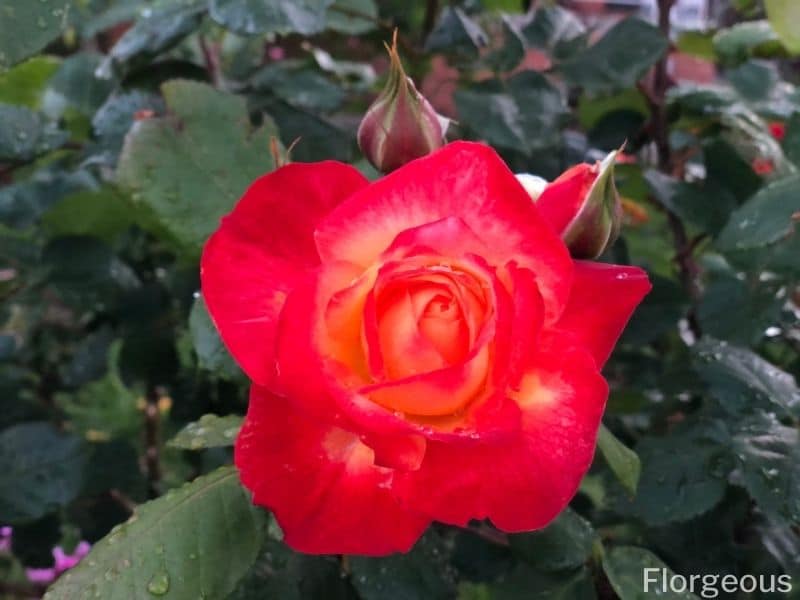
Choosing Which Rose Plant to Grow
Because of the fragrance and attractively symmetrical nature of the flowers, one would think that this is enough criterion to decide what kind of rose to grow in the garden.
Although garden roses and other rose types may have been made fool-proof through years and years of breeding and selection, one must look at several factors in choosing which rose or rose bushes to plant (2).
Use
What do you want from your rose plant? With the wide array of roses, there most definitely are those best for cut flowers, for beddings, hedge or garden specimens. It is important to decide what you will use the plant for in order to make the most of it.
Growth Habit
The way roses grow in the garden can influence the overall appeal of the space. There are roses that have a dense bushy habit which is excellent for borders and beddings. Some are arching with unruly stems spreading outwards and downwards, better trained with trellises and stakes. And there are upright roses with strong and vertical stems which are often observed in the modern bush roses.

When Do Roses Bloom?
Since the flower is what we are generally after, take note of the length of time it will take the rose plant to bloom. So when is the rose season?
In the past, many notable roses bloom only once a season but there are numerous varieties and cultivars today that will give you lasting flowers and fragrance all-year-round. Climbing and groundcover roses such as ‘Blaze’ and ‘Avon’ are some beautiful repeat-bloomers. Most of them bloom on and off from spring to summer and fall.
Foliage and Stem Color
The leaves and stems of a rose add value to the plant and are often neglected as consideration by the novice. Their thorns can be a nuance but many roses have attractive and fragrant leaves and stems like R. primula, R, eglanteria, R. glauca, and ‘Bella Rosa’.
Resistance
Roses are not immune to pests and diseases but many kinds today have improved resistance. Choose a rose that is hardy and resistant to these attacks and it will help to be familiar with what types of pests and diseases are recorded in your area to prepare yourself before planting. Some of the toughest roses to consider are ‘Peace Rose’, ‘New Dawn’, and ‘Perfume Delight’.
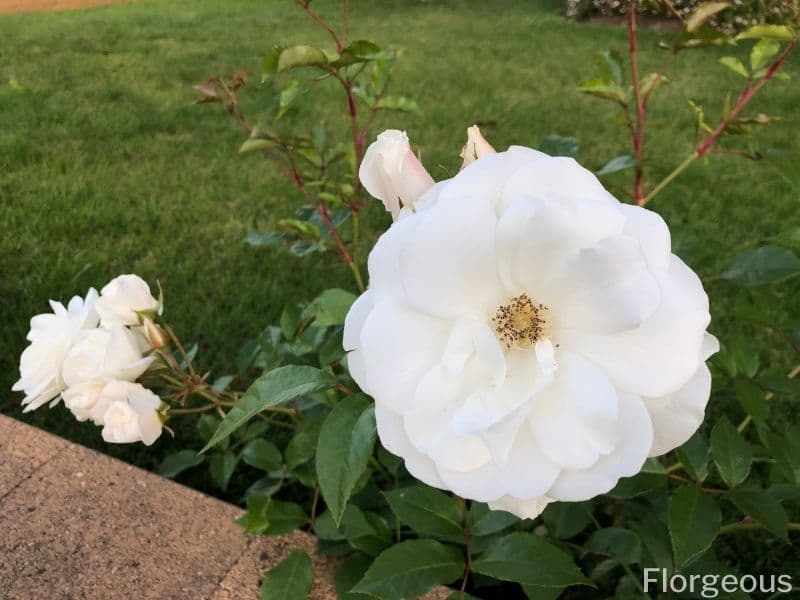
How to Grow Roses
When growing roses in the garden, it should be made sure that it is planted in the right location, provided with the right exposure to sunlight, water, and soil. Rose gardening may be finicky, especially to the amateur, but with the right condition, you and your rose plant will get by.

Position and Sunlight
Roses generally prefer a good amount of sun. This is vital in the prolific and vibrant blooms of the plant while keeping it lush and disease-free (2). The sunlight doesn’t need to be direct as intense heat will damage the leaves and flowers but exposure to the morning light of up to 6 hours is ideal.
It is best to position the plant in the highest part of the garden where it can receive the light, space, and air circulation it needs. However, the rose will still need protection from strong winds so barriers and fences should be installed.
It is not advisable to plant roses near hedges and trees as they tend to spread their roots and canopy while establishing and cause competition for light, water, and nutrients. They will do quite well with the protection of a building, provided they are planted at least half a meter away from the foundation for air circulation (3).
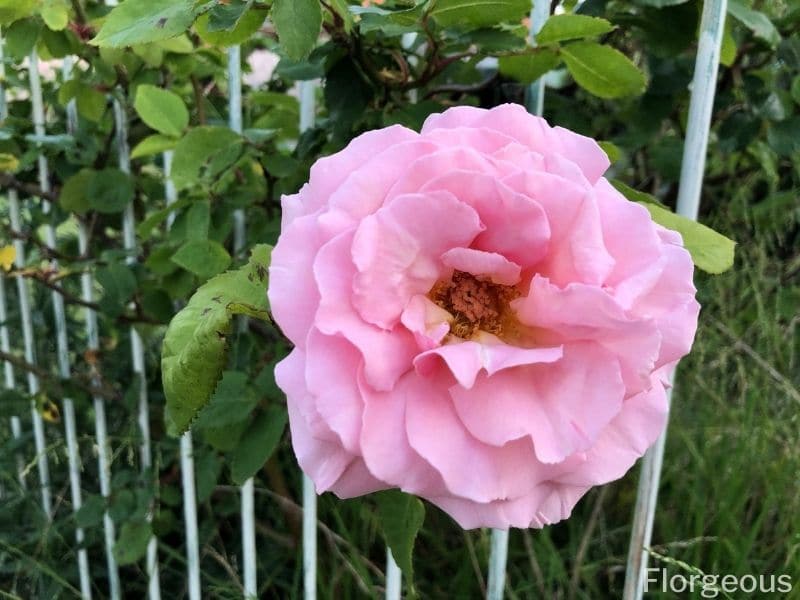
Soil and Water
The soil composition of your garden will greatly dictate how well your rose will grow. Many roses like the hybrid perpetuals bloom best in heavy loam soil while the old-fashioned tea roses prefer light sandy soils. Generally, roses thrive in a well-draining soil with a balanced mixture of organic and inorganic materials.
A good soil will be able to retain enough moisture to keep the plant hydrated but loose enough to prevent waterlogging.
Rose soil should also hold and store the nutrients required by the plant over a long period of time. Roses prefer slightly acidic soils with a pH of 6 to 6.5. pH higher than this may cause the leaves to yellow and shrivel (2).
Gardeners should pay attention to this pH ideal range when choosing rose companion plants.
Planting Material
Rose gardening starts with the planting material. After blooming, roses produce hips or fruits that contain the seeds of the plant but this is rarely used in growing roses. The seeds need to undergo stratification to sprout and most seeds do not germinate easily.
It is better to buy a grown plant and replant in the garden. Rose plants are often available in nurseries or suppliers in two forms, potted and bare-root.
Roses that come in pots are established, available all-year-round, and often look pretty with flowers going on but they can be expensive and the flowers can be a bad thing. This means that the plant is using up its reserves that could be used during its transition period in the garden and during the non-active seasons (2).
Unlike container roses, bare-root roses were stripped off their leaves and pruned with their roots packed in a way that they are kept moist (4). Often sold in the late autumn months, when the plant is dormant to ensure survival, they are cheaper and easier to transport and establish better after planting.
How to Plant Roses
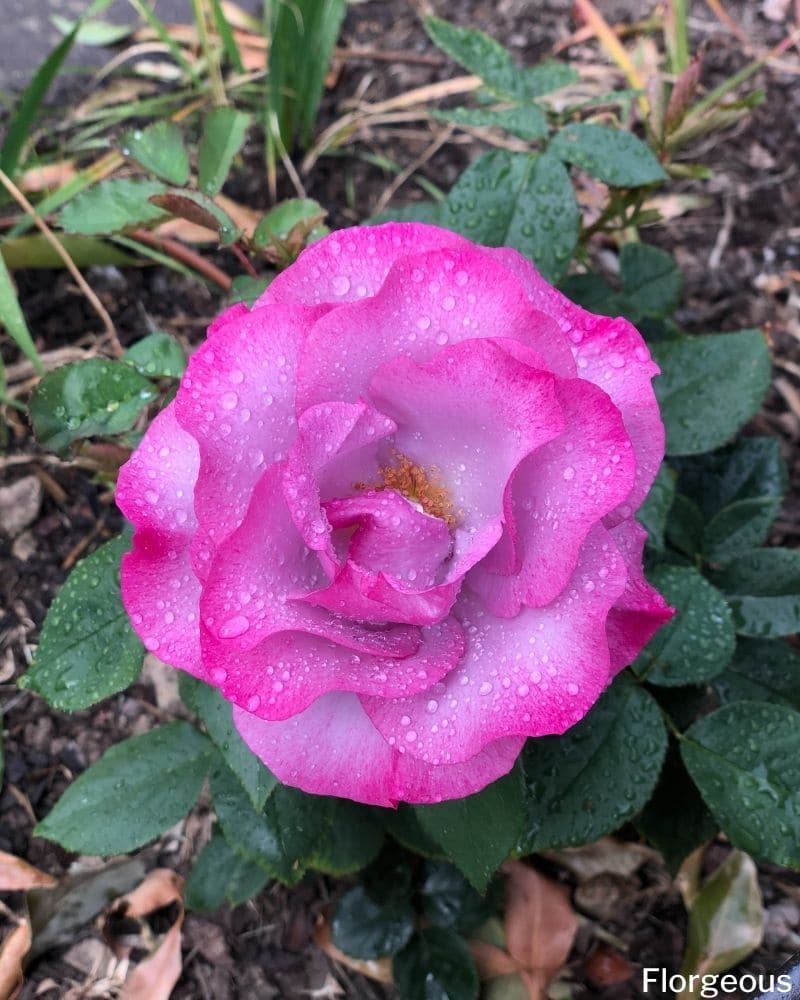
Here’s what you need to know when it comes to learning how to plant a rose bush:
Land Preparation
Start preparing your land in late summer. Clear the area of weeds that will compete with the rose for nutrients as well as trees and plants that will get in the way and shade the plant. Dig into the soil and identify how deep the topsoil is. It should be about half a meter in depth and if the layer is too thin, consider making a raised bed (3).
Mix in lots of organic matter like peat moss and grass clippings with the soil and don’t be afraid to add more as these will break down right away, just in time if you plan to plant your roses in the fall. Mulches like dried leaves and wood chips can be used to enclose the bed or planting area so that the soil will not run off with the rain.
Planting Potted Roses
Potted roses can be kept as is. Most roses sold in nurseries like this are already established and thriving and you only need to carefully transfer them in a more decorative container made of ceramic, clay, plastic, or wood to be placed by your patio, along the pathwalk, or in the garden.
But the best way to enjoy a rose plant is when it is planted in the ground where its roots and stems can flourish and therefore yield blooms after blooms.
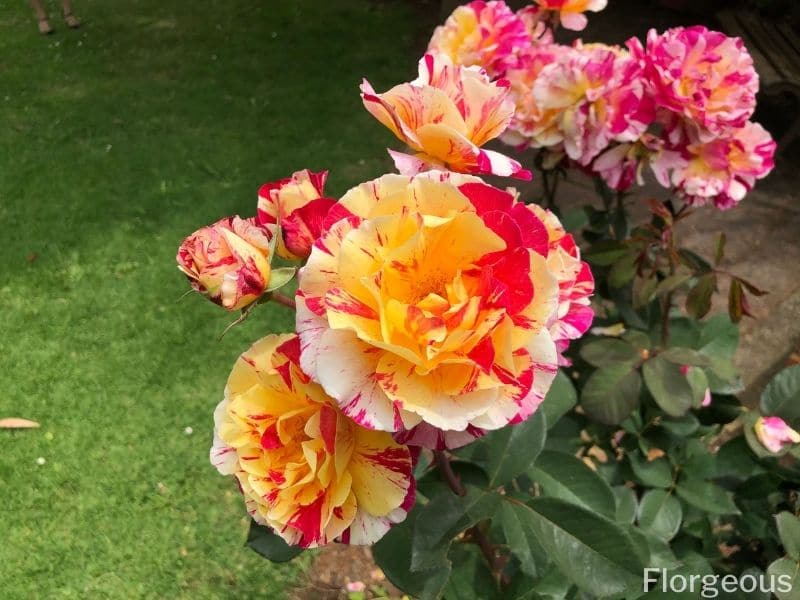
When to Plant Roses
To plant a potted rose, you should make sure that the frost has passed. If not, just keep the plant sheltered until spring has come. Gradually increase the sunlight exposure of the plant in a span of two weeks to avoid shock and prevent the leaves from going pale.
Dig a hole larger than the pot in your prepared area. Set the soil aside and temporarily place your potted rose into the hole. Gauge if the depth is right by making sure that the bud union is at the soil level, adjust to the right position by adding soil into place.
Lift the pot and carefully cut out the bottom and along the side of the pot with a utility knife. Most potted roses come in plastic pots so this should be fairly easy. Add a cup of bonemeal on the bottom of the hole and cover with soil. Place the potted rose into the hole and gently pull up the pot out of the plant.
Fill in the spaces with soil and firmly press without making it too compact. Soak the plant with water thoroughly and if the soil sinks, add more soil then water again. This should leave the surrounding soil slightly sunken which will make the successive waterings more effective (4).
Planting Bare Root Roses
So when is the best time to plant roses? Bare root roses should be planted in spring, when the snow has fully thawed, late in the afternoon to keep the plant from drying out under the hot sun. Dig a hole in the ground about 45cm deep.
At the base of the hole, apply a cup of bone meal then cover with about 5 inches of soil to form a mound. Spread the roots in all directions over the mound then put back the soil that was dug to make the hole. Firm the soil with your hand but do not overly compact and then soak the soil until the water stands on top.
Traditional growers then cover the whole plant with soil and mist it with water until the soil is moist. This is done daily and after several days, growth buds will crack the soil open which signals you to gradually remove the soil by spraying with water over the next couple of days (2).
The plant should be washed off of soil when new growths have appeared in many places and should be kept consistently moist but not overwatered until the plant has leafed out.
How to Care for Roses
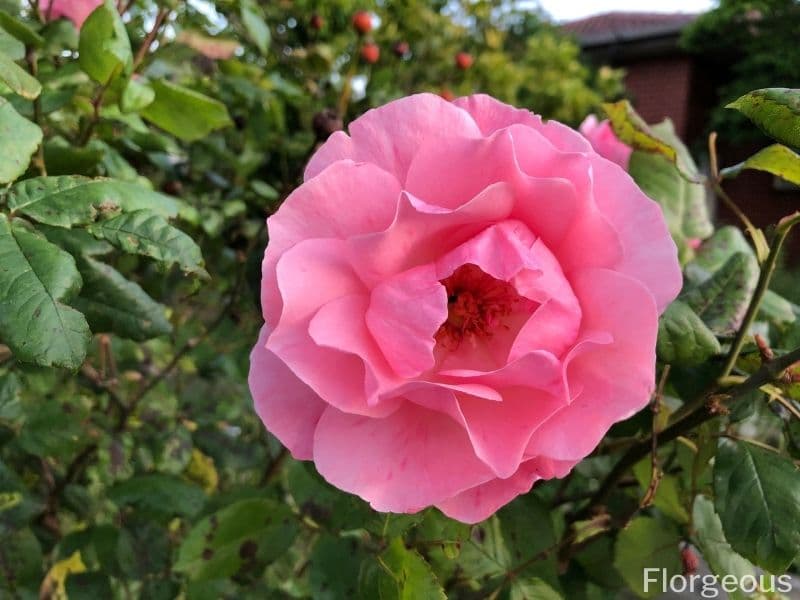
Fertilizer and Pest Control
Fertilizer application on your rose plant will keep it lush and blooming. A good mixture of both organic and inorganic rose fertilizers is necessary to achieve a healthy and vigorous rose plant growth. Generously apply twice a year, in early spring and in the fall. If you want better flower production and quality, apply fertilizer with higher phosphorus content.
Studies show that black spot which is the notorious disease of roses is worsened by deficiency in potassium so application of potash-rich fertilizer will help alleviate this problem (1).
Aside from black spots, other common pests and diseases of roses are Japanese beetles, powdery mildew, spider mites, and slugs. It is ideal to manually remove these pests as soon as observed but if infestations have become out of hand, there are commercial products that will specifically target these pests.
Pruning and Trimming Rose Bushes
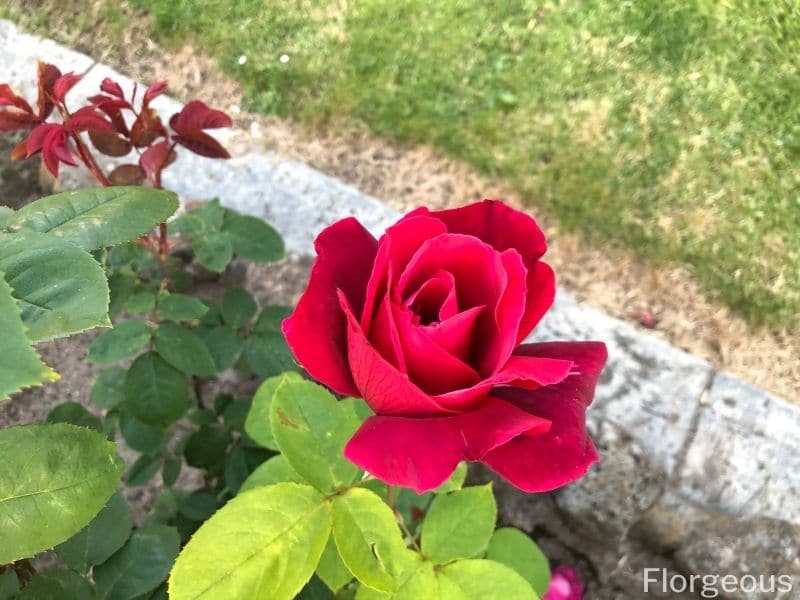
Even though roses like other plants can survive in their natural habitat without human intervention, there are practices that will make them last longer and flourish even better. Pruning and trimming roses do not just get rid of dead plant parts but have added benefits too.
They keep the sun exposure and air circulation even and help prevent spread of diseases. They improve the form and shape of the plant and keep its growth vigorous. Pruning roses generally improves their growth and allows them to live for decades.
How and When to Prune Roses
To learn how to trim rose bushes, first, you need to use the correct tools and personal protective equipment. Making cuts on your roses during winter should be avoided for the plant to establish better roots and to prevent any possible site for disease.
If you want your rose to produce a good flower, prune lightly and as high as possible, leaving canes and leaves that will generate the food for the plant to be able to bloom.
So, when to trim rose bushes? The best time is in spring, just when the buds are starting to appear, cut back by removing any broken or dead stems until you reach a live, fresh wood.
Cut canes or stems that crisscross as they will rub on each other and cause wounds that become a site for disease infection. Pruning late as well as dead-heading leads to dormancy through the delay in production of hips or fruits (3).
Trellises and Stakes
Rambling roses and other types that produce a cascading effect are best showcased when trained to a trellis (2). Trellises are metal or wooden bars shaped to support climbing plants like bushy roses. ‘Tangerine Skies’ and ‘Gertrude Jekyll’ best display their flowers when trained to arching trellises.
Stakes are often used to support and balance the growth of roses. In planting tree roses, a stake is usually employed with which the plant’s top branches are attached using a polyester twine. This stabilizes the plant and protects it from storm damage (2).
Flowering Roses

Most roses are known to flower in spring, putting on a show up to the early days of autumn. There are some types like climbing and shrub roses roses that open up during summer but the first rose bloom cycle often starts with winter pruning.
Many gardeners practice deadheading roses, which involves removing spent flowers, and then feed them with organic fertilizer. This cleans the plant, prevents unwanted seed production and germination, and encourages a thicker and fuller growth. When the new leaves reach 3-4cm in size, a high nitrogen fertilizer can be applied to promote stem and leaf growth.
This is the time to select the best canes or stems to keep. They should be straight and upright and those that are crisscrossing and facing downwards should be cut. This helps the plant concentrate its energy into the desirable stems. When these stems start to produce buds, the fertilizer should be replaced with phosphorus-enriched supplement to promote bigger blooms (3).
Once the flowers are ready to bloom, cut back on feeding and remove extra twigs and stems obstructing the blooming stems. Keep the roses watered but avoid droplets on the petals to preserve the beauty and freshness of the flowers.

Propagation
There are 2 common methods of rose propagation, cuttings and budding.
Cuttings
Cuttings are either obtained from the mature hard stems or the softer, more pliable ones hence the hardwood and softwood cuttings. Professionals find it better to root hardwood cuttings but softwood cuttings are easier to work with, especially for beginners.
However, formation of roots in cuttings can be truly difficult; even commercial growers lose more than half of their propagations from this technique. Plants that grow from cuttings have their own roots which make them sturdier. If you plan to do this method, use climbers, miniatures, and species roses which are more forgiving.
Obtain cuttings from an established plant in late fall. Select a cane no smaller than the diameter of a pencil and break the upper end. It is matured enough if it snaps easily. Cut the whole cane at the base and make several cuttings from this, each with at least 4 growth buds.
Down each cutting, below the 4th growth bud, make a slanted cut to identify the bottom of the cutting. Dip this in an insecticidal soap solution and bury up to 20cm of the cuttings into a pot of moist peat. In early spring, these cuttings should form callus and should be transferred individually into a pot with equal amounts of loam, peat, and perlite.
Place the pot in an area with indirect sunlight and keep the soil moist and the exposed cane misted. Roots will start to form along the buried part of the cuttings and once they begin to produce buds, feed them with a diluted fertilizer. Gradually increase the exposure to sunlight in a period of 2-3 weeks and come winter, make sure that the plant is protected (2).
Budding
Propagation from cuttings is cheap but can be difficult that’s why the budding technique was popularized in growing roses. Budding is a method of selecting and taking a bud from one plant and putting it on the rootstock of a different rose plant.
The rootstock is a rose plant with a healthy and sturdy root system, usually 15-20cm tall. This plant should have long canes that will provide the space to grow a bud or two. Caninae and Indicae are two rose groups often used as rootstocks.
Once the rootstock is planted, select suitable canes and clean them of dry twigs and tiny roots. Using a budding knife, cut off canes containing several buds from your desired rose plant. This should be done in midsummer, while the roses are flowering. Take buds from the middle of the cane as these are proven to grow well and flower vigorously.
Make a cut about 1cm above the bud and scoop into the cane, moving downward and coming out another 1cm below the bud. The resulting flap is called a shield. Moving back to the rootstock, expose and clean the area just above the roots. Create a T-shaped incision into the bark and gently peel the resulting 2 flaps. Slide the shield into the incision until the bud lines up with the horizontal cut.
Fold the bark flaps over the shield and remove the excess part that covers the bud then wrap the bud with a budding tape to secure it into place and keep the set-up from drying out. You’ll know that the budding is successful if the bud swells and turns green, otherwise, it will shrivel and turn black and you will need to repeat the process (3).
FAQs
How do you keep roses blooming?
To keep roses blooming, provide them with adequate sunlight (6-8 hours a day), consistent watering, and a balanced fertilizer during the growing season. Prune spent blooms (deadhead) regularly to encourage continuous flowering and maintain healthy growth.
How do you keep roses alive if they are dying?
If your roses are dying, assess the situation to determine the cause. Common issues include overwatering, underwatering, pests, and diseases. Adjust your watering schedule, ensure proper drainage, and treat any pests or diseases. Pruning dead or diseased canes and applying mulch can also help revive struggling roses.
Why do my roses only bloom once?
Some types of roses, such as old garden roses, only bloom once a season due to their natural growth cycle and genetics. Modern rose varieties, like hybrid tea roses and floribundas, are often bred for repeat blooming.
How can you tell if a rose is overwatered?
Some types of roses, such as old garden roses, only bloom once a season due to their natural growth cycle and genetics. Modern rose varieties, like hybrid teas and floribundas, are often bred for repeat blooming.
Up next:
References
Reference list
(1) Titchmarsh, A. How to Garden: Growing Roses. Random House. 2016. P. 128.
(2) Hass, R. et. al. Growing Roses in Cold Climates. University of Minnesota Press. 2012. P. 272.
(3) Kingsley, R. & Page-Roberts, F. Roses and Rose Growing. 2008. P. 228.
(4) Fisher, O. Notes on the Art of Growing Roses Out-of-doors. Bradbury, Evans, and Company. 1870. P. 23.
Close







